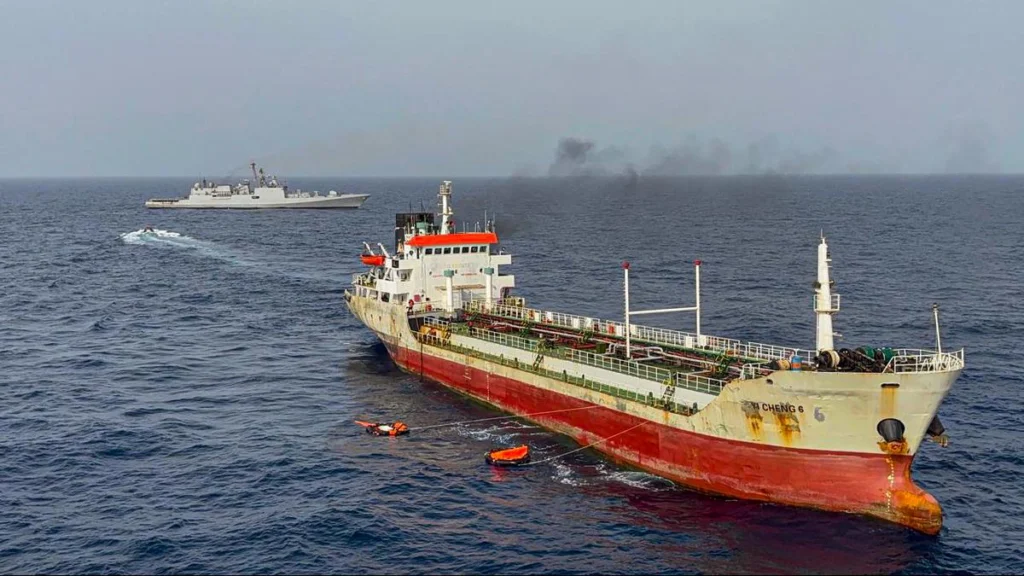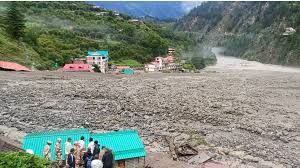Indian Navy contains fire on board Palau-flagged tanker with 14 Indian crew

Indian Navy Contains Fire on Board Palau-Flagged Tanker with 14 Indian Crew
On June 29, 2025, the Indian Navy responded to a distress call from a Palau-flagged tanker in the North Arabian Sea. The fire broke out on the vessel, endangering the 14 Indian crew members aboard. The Navy quickly launched a fire-fighting operation to contain the blaze and ensure the crew’s safety.
The fire erupted in the engine room of the tanker. This area is crucial because it houses machinery and fuel systems. If the fire spread, it could have caused an explosion, endangering the ship and crew. Fortunately, the Indian Navy’s swift response prevented further damage.
The Distress Call and Navy’s Quick Action
The tanker’s distress signal was received by the Indian Navy’s operations room, which immediately activated the emergency protocols. The Navy dispatched fire-fighting teams and rescue units to the site. This rapid response was vital to controlling the situation before it worsened.
The crew on board had already started fighting the fire using the ship’s internal systems. However, they needed outside help as the fire continued to spread. Once the Navy arrived, they took control of the operation, quickly dousing the flames and preventing them from reaching other parts of the ship.
Ensuring the Safety of the Crew
The Navy’s primary concern was the safety of the 14 crew members. The ship’s fire suppression system could only contain the fire to a certain extent. The crew was at risk of exposure to toxic fumes and smoke. Therefore, the Navy ensured that they were removed from the most dangerous areas of the vessel.
The Navy’s quick intervention helped keep the crew safe from harm. After bringing the fire under control, the Navy’s medical teams checked on the crew to ensure no one had sustained injuries. Fortunately, there were no reported casualties, thanks to the timely action by the Navy.
The Role of the Indian Navy in Maritime Security
This incident emphasizes the Indian Navy’s critical role in maintaining security and safety on the high seas. The Navy is frequently called upon to assist vessels in distress, whether due to fire, mechanical failure, or other emergencies. The rapid response to the Pahalgam tanker’s fire is just one example of the Navy’s readiness to respond to crises at sea.
The Navy’s capabilities in fire-fighting and search-and-rescue operations are vital for safeguarding maritime traffic. The Indian Ocean, where the incident occurred, is one of the busiest shipping routes in the world. As a result, the Indian Navy has made it a priority to develop the necessary skills and resources to manage maritime emergencies.
Challenges of Fighting Fires at Sea
Fighting fires on board a ship is not an easy task. Fires at sea are particularly challenging due to the vessel’s confined spaces and the difficulty in accessing the affected areas. Ships also carry hazardous materials, including fuel and chemicals, which can make fires even more dangerous.
In this case, the Navy had to act quickly to ensure the fire did not escalate. They also had to work with the tanker’s crew to limit damage to the vessel. The teamwork between the crew and the Navy’s fire-fighting team proved essential in bringing the situation under control.
Maritime Safety and Preparedness
The incident also highlights the importance of maritime safety protocols. The tanker’s crew had received proper training in handling fires at sea. They were able to use the ship’s fire suppression systems until the Navy’s specialized teams arrived. This demonstrates the importance of proper training and preparation for dealing with emergencies on board.
India has invested heavily in improving its maritime safety infrastructure. The Indian Navy conducts regular training exercises to ensure that personnel are ready to handle emergencies efficiently. They also collaborate with other international maritime agencies to enhance global safety standards.
The Strategic Importance of the Indian Navy
The Indian Navy plays a strategic role in maintaining the security of sea lanes in the Indian Ocean. It also helps secure international trade routes that pass through these waters. The Navy’s presence in the region acts as a deterrent against piracy and terrorism, ensuring that global shipping can continue safely.
India’s expanding naval capabilities are essential for maintaining peace and stability in the region. The Navy’s response to this fire is another example of India’s commitment to safeguarding both its own maritime interests and the broader global maritime community.
India’s International Role in Maritime Safety
The Indian Navy’s involvement in this operation underscores India’s growing influence in international maritime affairs. As a regional power, India has been working to strengthen its maritime security partnerships with countries around the world. The Navy’s active role in securing international shipping routes is a key part of these efforts.
India’s naval response to maritime emergencies also reinforces its position as a leader in global security initiatives. By assisting vessels in distress and maintaining a strong maritime presence, India helps promote peace and stability in one of the world’s most crucial regions for international trade.
Conclusion
The Indian Navy’s timely response to the fire on the Palau-flagged tanker in the North Arabian Sea demonstrated its expertise and readiness in handling maritime emergencies. By containing the fire and ensuring the safety of the 14 Indian crew members, the Navy prevented a potential disaster. The incident also highlights the strategic importance of the Navy in maintaining maritime security, both for India and the international community.
As maritime traffic continues to increase, the role of the Indian Navy in protecting sea lanes and responding to emergencies will only become more critical. This incident serves as a reminder of the challenges faced at sea and the importance of a well-prepared and capable navy to address these challenges.






